For film aficionados who’ve long dreamt of existing within the meticulously crafted worlds of Wes Anderson, dream no longer: the cinematic auteur has collaborated with fashion house Prada in the construction of a bar. The results, as you can imagine, are glorious.
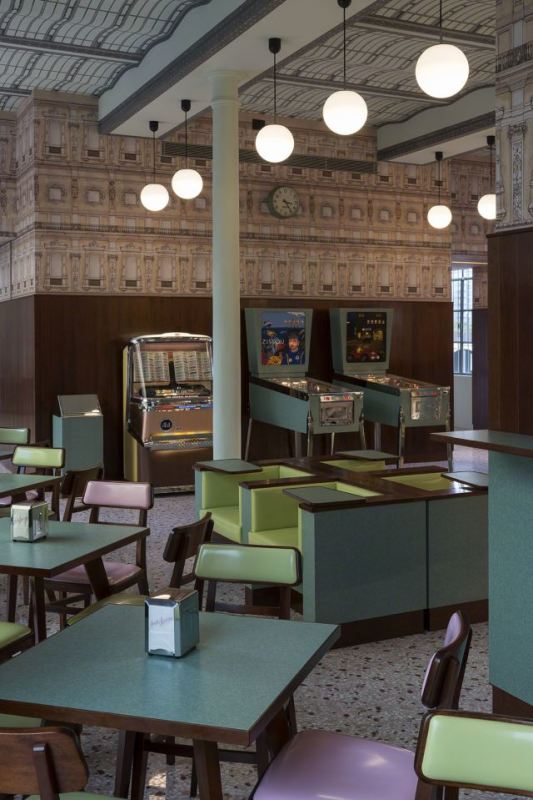
Bar Luce marks the second collaboration between Anderson and the luxury brand after the short film Castello Cavalcanti in 2013; but this project is significantly more ambitious, and interactive, in scope.
Housed within Fondazione Prada, a new 120,000-square-foot gallery space in Milan, the lounge bar serves as a loving tribute to kitsch sensibility. While the official press release would have you believe the establishment is modeled after a typical Milanese café, the reality is anything but: a beautifully nostalgic throwback to 1950s design, incorporating the concepts of neorealism in Italian cinema.
In other words, a distinctly Andersonian interpretation of what could be considered a typical Milanese café. Intricate wooden paneling across the walls, polished concrete floors and a sea of teal green furniture all aids in crafting the midcentury, neorealist aesthetic the director is clearly so fond of. His quirky sense of design is on full display: a pleasantly retro jukebox stands beside a pair of pinball machines, one of which is decorated in honour of Castello Cavalcanti – a fitting tribute to the bar Prada built.
The Prada Foundation has been a dedicated patron of the arts for twenty years, adapting warehouses and churches in Milan as a means of temporary exhibition space. But after a nomadic two decades, Fondazione Prada marks the first time the label has put down permanent roots in a city, converting what was one a century-old distillery into a central hub of culture.
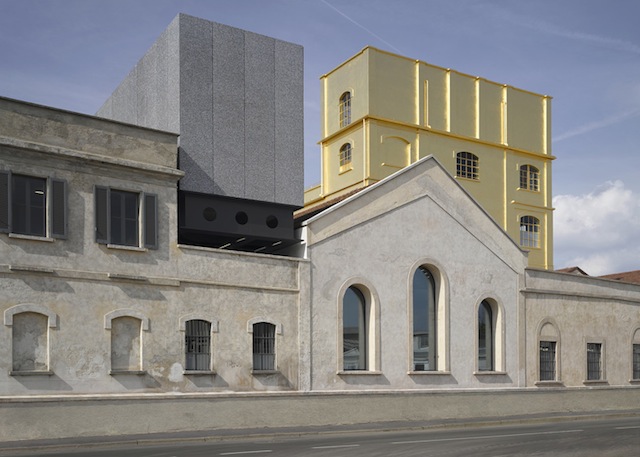
Prada are far from the first company to immerse themselves in a million-dollar gallery space. The Louis Vuitton Foundation opened a similar arts centre in Paris this year, designed by architect Frank Gehry and costing a reported $143 million to build. And just last month, Giorgio Armani opened the Armani/Silos in Milan: a revolving gallery retrospective dedicated to the sartorial master’s four decades in fashion.
The Fondazione Prada eclipses these installations in both size and intent. Designed by famed Dutch architect Rem Koolhaas and his OMA firm, seven renovated buildings and three entirely new constructions have been incorporated into the design.
“We worked on a respect for what was existing,” Koolhaas remarked at the launch of the project.
“We didn’t work with contrast but on the contrary, we tried to create a situation where old and new can work very seamlessly together and are sometimes actually merged together so that you cannot tell at any one moment whether you are in a new or an old situation. That was exactly our ambition.”
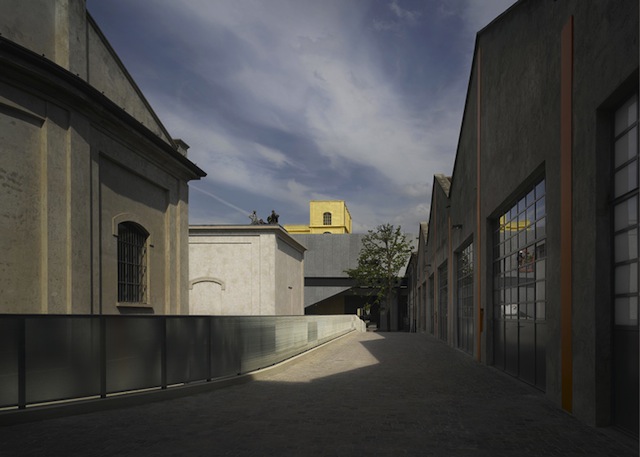
The ambition paid off. The integration of these three new buildings into the framework of the distillery is seamless. One of the buildings, a cinema, stands separate from the original construction yet sunken into the ground as a means of creating additional room.
The Podium, however – an enormous gallery space designed to house temporary exhibitions – has been artfully erected around one of the original distillery buildings: the colourfully named Haunted House.
Haunted? Unlikely. But under the vision of Koolhaas the house is undeniably striking. In order to separate the building from the encroaching Podium, OMA have intricately coated the exterior in 24-karat gold leaf.

Even for a luxury brand like Prada, coating an entire building in gold seems decadent. But according to Koolhaas, it’s more cost-effective than you might suspect:
“It was actually a last-minute inspiration, to find a way to give value to a seemingly mundane and simple element. But we discovered that gold is actually a cheap cladding material compared to traditional claddings like marble and even paint.”
The final new building, a tower, will be constructed in the far corner of the complex at a later date. Intended to house a rotating stable of installations, the tower is a curious creation: each level is one metre higher than the level previous, adding a distinct perspective difference to each separate floor.
The Fondazione Prada officially opened this week, and there are already a number of impressive, thought-provoking exhibitions awaiting public perusal.

The main exhibition, entitled Serial Classic and co-curated by Salvatore Settis and Anna Aquissola, is an exploration of classic Greek art and their derivative imitations created by the Roman Republic. A collection of ancient Greek sculptures and Roman reproductions have been arranged over a landscape of stone slabs, spread across the dual floors of the Podium.
Nearby, the four-story Haunted House holds a permanent exhibition from American sculptor Robert Gober, whose work hybridises everyday objects as a means of exploring the themes of sex, politics, religion and nature.
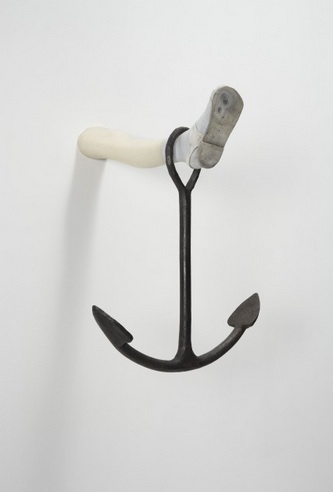
The exhibition, which also includes two pieces from the French-American artist Louise Bourgeois, contains sculptures from the past two decades along with installations specifically created by Gober for the Fondazione Prada.
And gallery space Suds – once a laboratory within the distillery complex – seems a fitting place to house one of the most curious collections within Prada’s testament to the arts. An Introduction, the brainchild of Miuccia Prada and art historian Germano Celant, is an intense and sprawling journey through the history of the Italian art that served as inspiration for Fondazione Prada.
Running from the Renaissance to the New Dada and Minimalist movements of the 1960s, An Introduction spills out of Suds and into the open spaces of surrounding courtyard Desposito. It’s an eclectic collection of pieces to be pondered over by art buffs and puzzled over by members of the general public.
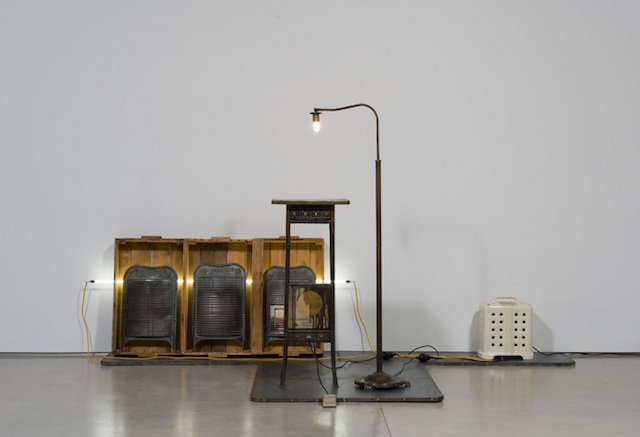
There are more exhibitions to be seen in these early weeks, including a documentary from director Roman Polanski and works dedicated to the synecdoche, a figurative form of speech similar to metonymy. And there are more to come, as Fondazione Prada intends to shift exhibitions over the coming months and years to incorporate new artists, ideas and themes.
But if all you really want is to grab a drink, listen to a jukebox full of 50s Italian pop and chat with the poetic glibness of a Wes Anderson character, Bar Luce is everything you could hope for and more from Prada’s testament to art and design.
“I tried to make it a bar I would want to spend my own non-fictional afternoons in,” Anderson espoused.
No doubt there’ll be plenty of patrons happy to wile away their non-fictional afternoons there too. Now excuse me while I pack my records, taxidermied animals and collection of safari suits – I’m headed to Milan.







